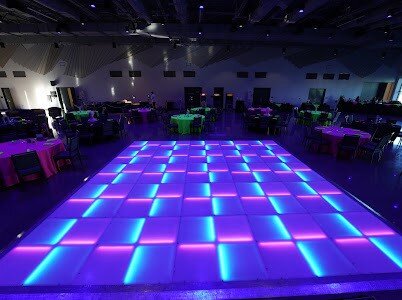Cutting-edge Styling Movements Shaping the Future of Engaging LED Dance Surfaces
Cutting-edge Styling Movements Shaping the Future of Engaging LED Dance Surfaces
Blog Article
Interactive LED dancing floors have become increasingly favored in multiple entertainment venues, such as nightclubs, concerts, and gatherings. These surfaces utilize advanced technology to generate vibrant lighting displays that respond to sound and movement. As technology continues to advance, several innovative styling patterns are shaping the prospects of these interactive dance floors. These patterns not just enhance the visual encounter but also boost user engagement and forge a more engaging environment for performers and spectators alike.
One notable pattern in interactive light-emitting diode dance floors is the incorporation of smart tech. Many new models incorporate sensors that identify movement and adjust the illumination accordingly. This implies that the floor can alter colors, designs, and visuals based on how numerous individuals are moving and where they are positioned. This responsiveness fosters a dynamic setting that encourages involvement and enthusiasm. Additionally, some designs enable users to manage the lighting through smartphone apps, providing them the power to tailor their experience in real-time.
Another crucial trend is the utilization of sustainable materials and power-saving technology. As ecological concerns increase, many designers are concentrating on creating LED dancing floors that are not only aesthetically stunning but also sustainable. This comprises utilizing recycled resources for the floor's building and implementing power-efficient LED illumination. These innovations help minimize the environmental impact of events while still offering a captivating aesthetic experience. By focusing on eco-friendliness, designers are attracting to a more environmentally aware crowd.
The integration of enhanced reality (AR) is also changing the responsive dance surface experience. AR technology enables users to view digital images and visuals overlaid on the physical world through their mobile devices or AR spectacles. This can enhance the dancing floor experience by introducing virtual elements that engage with the real space. For instance, dancers might see moving characters or visual displays that respond to their movements, producing a unique and engaging atmosphere. This trend is particularly appealing to younger audiences who are familiar to virtual interactions in their everyday activities.
Furthermore, the design of responsive light-emitting diode dance floors is becoming more versatile and modifiable. Many new models can be readily set up in various settings, from short-term gatherings to permanent installations. This adaptability allows locations to develop customized experiences that address to various themes and audiences. Some models even include modular components that can be reconfigured to form different shapes and layouts. This adaptability not only enhances the visual attractiveness but also allows for creative expression in gathering organization.
In conclusion, the future of click resources responsive light-emitting diode dancing surfaces is being influenced by innovative design patterns that concentrate on innovation, sustainability, augmented virtual reality, and flexibility. These developments are creating more immersive and captivating experiences for participants, establishing dancing floors a central element of recreational locations. As these trends continue to evolve, they will likely reshape how individuals interact with sound and motion, guaranteeing that responsive LED dance floors remain a favored option for gatherings and festivities.